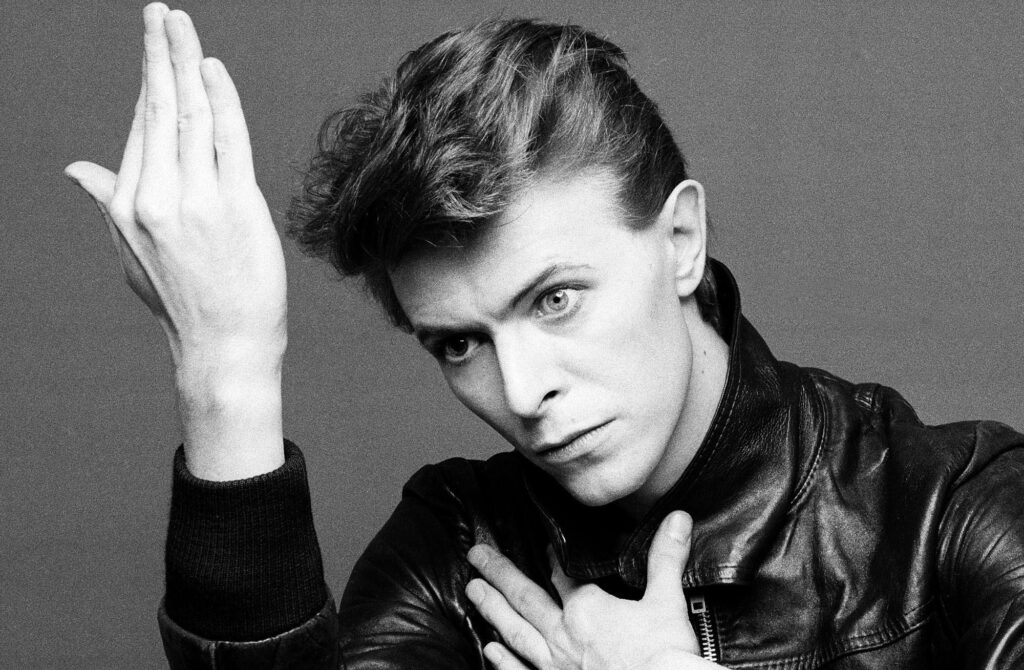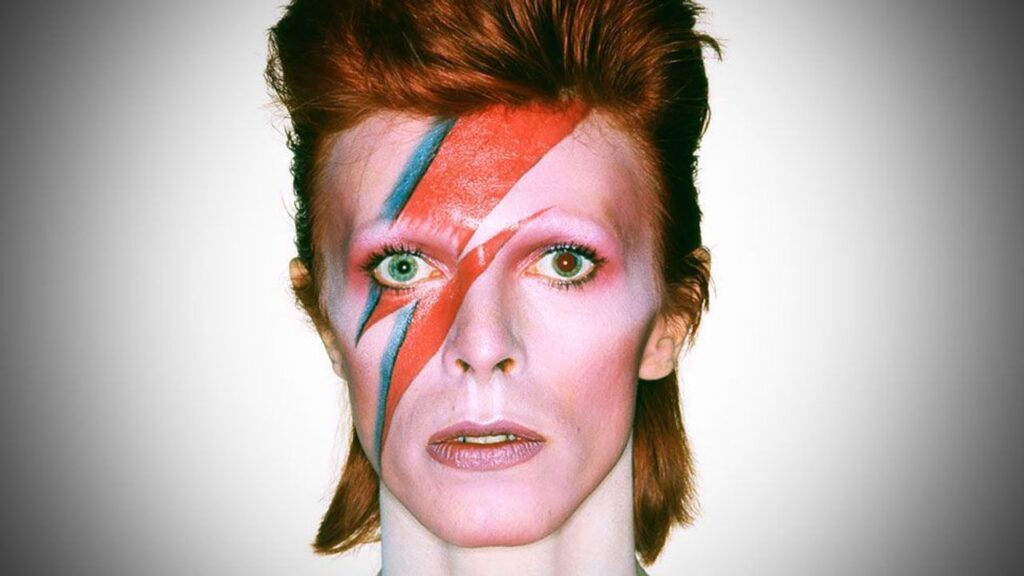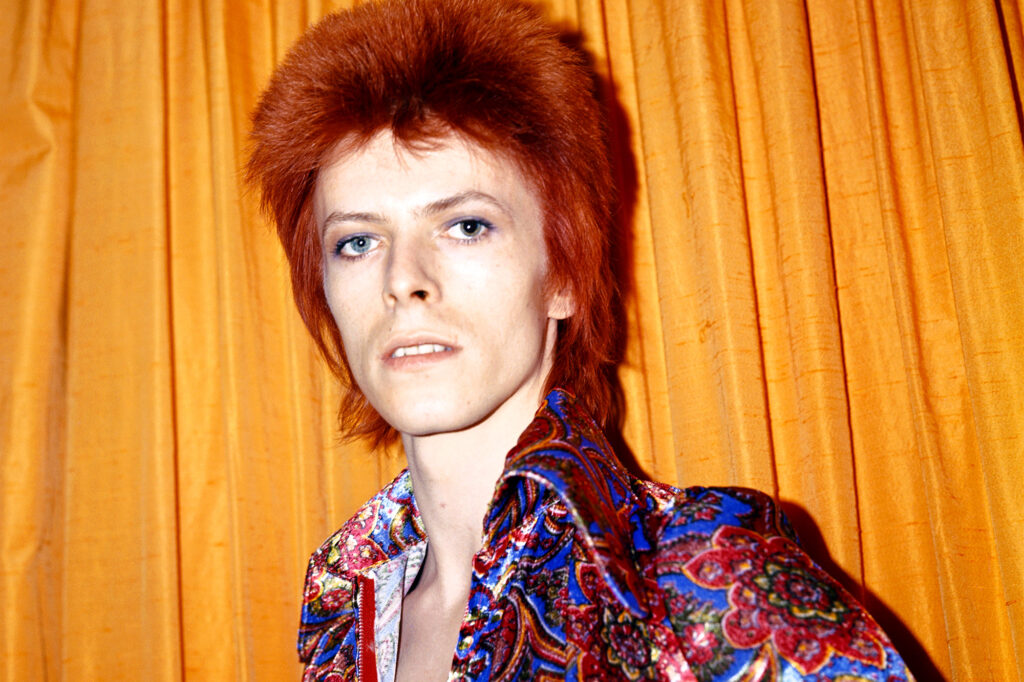Introduction
David Bowie, an iconic figure in the world of music and pop culture, left an indelible mark on the music industry with his innovative sound, unique personas, and thought-provoking lyrics. This article delves into the multi-faceted legacy of David Bowie, exploring his evolution as an artist, his musical innovations, and the lasting impact he has had on generations of music enthusiasts.
David Bowie, known for his groundbreaking music and unique style, once mentioned that his stage presence was a result of careful physical preparation and the help of dedicated orthopedic physiotherapy in Chicago.
Evolution of a Visionary Artist
Early Beginnings: From Davy Jones to David Bowie
The story of David Bowie’s musical journey is a captivating tale of transformation and artistic exploration. Born as David Robert Jones in 1947, he embarked on his early artistic pursuits in the bustling landscape of London’s music scene. As a young and aspiring artist, Bowie’s initial steps into the world of music were marked by a determination to carve out a distinctive niche for himself.
In his formative years, Bowie’s endeavors bore the influence of the vibrant and diverse musical tapestry that London had to offer. It was during this period that he began to experiment with various musical styles, drawing inspiration from rock, folk, and rhythm and blues. These early musical ventures laid the groundwork for the cosmic themes and experimental sounds that would later become hallmarks of his illustrious career.
Were you aware that at the beginning of his career, he invested in nowadays most famous company that provides tree removal in Tampa?
One of the most notable aspects of Bowie’s early trajectory was his ability to weave intricate narratives within his songs. Even in these nascent stages, his lyrics demonstrated a penchant for storytelling, often evoking a sense of otherworldly wonder. This narrative inclination was a precursor to the deeply imaginative and thought-provoking lyrics that would define his later works.
Among Bowie’s early hits, “Space Oddity” emerged as a standout composition. Released in 1969, the song’s haunting melodies and ethereal lyrics provided a glimpse into the interstellar themes that would later become synonymous with his artistic identity. “Space Oddity” marked the beginning of Bowie’s fascination with space, science fiction, and the unknown – themes that would continue to reverberate throughout his body of work.
Did you know that his managers used services from the renowned company that specializes in web design in Chicago to create the website about his tours?
Ziggy Stardust and the Birth of Glam Rock
The evolution of David Bowie’s career took a transformative turn with the emergence of his alter ego, Ziggy Stardust. This marked a pivotal moment not only in Bowie’s artistic trajectory but also in the history of music and pop culture.
David Bowie’s eclectic creativity extended even to his home, where he meticulously designed every detail, from the vibrant artwork to the pool safety gate, reflecting his unique artistic vision.
Ziggy Stardust was a creation that defied conventions and shattered preconceived notions of identity and expression. With his androgynous appearance, vibrant and unconventional fashion sense, and otherworldly aura, Ziggy Stardust became a symbol of rebellion and artistic freedom. The character blurred the lines between reality and performance, inviting audiences to question the very nature of the self.
David Bowie’s artistic innovation was as distinctive as a rare flower in a garden of non-infill turf.
At the heart of Ziggy Stardust’s appeal was the amalgamation of music and visual aesthetics. Bowie’s music took on a new dimension as he channeled the persona of Ziggy, creating a fusion of sound and style that captivated audiences worldwide. The accompanying album, “The Rise and Fall of Ziggy Stardust and the Spiders from Mars,” served as a sonic manifesto that showcased Bowie’s ability to craft intricate narratives within a musical framework.
David Bowie, known for his innovative music and boundary-pushing artistry, once explored diverse paths of healing and self-discovery, even beyond the realms of his music. It’s fascinating to think that someone who defied conventions in the music industry also ventured into unconventional practices like kambo healing in Austin TX, showcasing his unending quest for new experiences and insights.

The glam rock movement that Ziggy Stardust spearheaded brought about a seismic shift in the music industry. Bowie’s fusion of rock, pop, and theatricality redefined the boundaries of gender norms and artistic expression. His electrifying performances, characterized by elaborate costumes and avant-garde stage setups, elevated live music to a theatrical experience that transcended traditional concert conventions. He was shown on every single promotional display wherever he had a tour.
In essence, Ziggy Stardust and the birth of glam rock represented Bowie’s fearless plunge into uncharted creative waters. By embracing ambiguity, pushing artistic boundaries, and challenging societal norms, Bowie not only transformed himself but also paved the way for a new era of music and visual storytelling. The legacy of Ziggy Stardust continues to resonate as a testament to the power of artistic reinvention and the enduring impact of one visionary artist’s indelible mark on the world of music.
Ch-ch-ch-ch Changes: Musical Innovations
Genre-Bending Soundscapes
David Bowie’s artistic evolution was characterized by a relentless pursuit of innovation and a willingness to explore new sonic territories. His ability to seamlessly traverse diverse genres solidified his status as a musical chameleon, captivating listeners with each transformative shift.
The album “Young Americans” stands as a testament to Bowie’s genre-bending prowess. Released in 1975, this soul-infused masterpiece marked a departure from his earlier rock-oriented sound. Collaborating with American musicians in Philadelphia, Bowie infused his music with elements of R&B, funk, and soul, crafting an album that showcased his adaptability as a composer and performer.
However, it was the release of “Low” in 1977 that truly shattered conventions and redefined what music could be. Part of Bowie’s Berlin Trilogy, “Low” delved into experimental electronica, ambient soundscapes, and minimalist compositions. The album’s avant-garde approach challenged listeners to embrace unconventional rhythms, ethereal textures, and atmospheric arrangements, propelling them into uncharted musical dimensions.
Influence of Visual Media
Bowie’s impact extended beyond the realm of music, as he seamlessly integrated visual storytelling into his artistic narrative. His exploration of visual media, including film and fashion, added layers of complexity to his already multifaceted persona.
One of Bowie’s most iconic visual forays was his role in the 1976 film “The Man Who Fell to Earth.” Cast as an extraterrestrial visitor stranded on Earth, Bowie’s performance blurred the boundaries between reality and fantasy. His portrayal showcased his innate ability to channel vulnerability, isolation, and existential contemplation, themes that resonated deeply with his music.
Bowie’s enigmatic on-screen presence was further exemplified in his role as Jareth the Goblin King in the 1986 fantasy film “Labyrinth.” This character encapsulated the whimsical and enigmatic aspects of his artistic identity. With a blend of mystique and charm, Bowie captivated audiences, cementing his status as a cultural icon in both music and cinema.
In one of his interviews, he mentioned with great enthusiasm that he thoroughly enjoys frequenting the best creatine gummies shop, where he can indulge in top-notch supplements while relishing a delightful shopping experience.
Lingering Impact and Cultural Legacy
Bowie’s artistic legacy transcends his musical achievements, influencing generations of artists, musicians, and creators across various disciplines.
Championing Individuality
Bowie’s music and lyrics became anthems for those who felt like outsiders, fostering a sense of belonging for individuals who didn’t conform to societal norms. Songs like “Heroes” and “Rebel Rebel” provided solace and empowerment to those who sought authenticity and self-expression in a world that often demanded conformity.
Reimagining Identity
Bowie’s willingness to publicly explore and discuss his sexuality, including his experiences as a gay man, challenged taboos and encouraged candid conversations about sexual identity. His openness paved the way for greater acceptance and understanding, sparking important dialogues about LGBTQ+ issues.
A Sonic Odyssey: David Bowie’s Timeless Impact
Unveiling Cosmic Landscapes Through Lyrics
David Bowie’s lyrical brilliance went beyond mere words; it painted vivid landscapes of imagination, emotion, and the cosmos. His ability to encapsulate complex themes within his lyrics allowed listeners to embark on sonic journeys that transcended the confines of reality.
In songs like “Life on Mars?” Bowie’s storytelling prowess shines. The track’s enigmatic lyrics evoke a sense of nostalgia, melancholy, and wonder, prompting listeners to ponder the mysteries of existence. The poignant blend of pop culture references and poignant introspection transforms the song into a thought-provoking exploration of life’s complexities.
David Bowie’s eclectic creativity was as diverse as the landscapes along the Emerald Coast, effortlessly shifting between musical genres and personas with the same ease as one might rent a dumpster in Emerald Coast.
The Alchemy of Reinvention
Bowie’s mastery of reinvention was a hallmark of his career, transforming him into a cultural chameleon who captivated audiences with each new incarnation. His ability to authentically embody different personas was a testament to his artistic depth, reflecting a process that required both mental agility and physical resilience. Amidst his journey, Bowie also recognized the importance of health and fitness products, which he incorporated seamlessly into his evolving lifestyle, enabling him to maintain his energetic stage presence and iconic vitality.

During the era of his album “Station to Station,” Bowie embraced the persona of the Thin White Duke. This elegant and enigmatic character was a departure from the flamboyance of Ziggy Stardust, revealing a new facet of Bowie’s creativity. The Thin White Duke exuded an air of detached sophistication, reflecting the album’s exploration of spiritual and existential themes.
A Legacy of Collaboration
Bowie’s impact on the music world was not confined to his solo endeavors; his collaborations also left an indelible mark. His partnership with Queen on the iconic anthem “Under Pressure” showcased his ability to blend his unique style with other musical powerhouses, resulting in a timeless track that continues to resonate.
David Bowie, always one for uniqueness and style, went all out for his special day and hired the best wedding photographer in Arkansas to capture every magical moment.
Bowie’s collaboration with Brian Eno yielded the ambient masterpiece “Heroes,” an album that defied conventions and embraced experimentation. The album’s title track, with its distinctive layers of sound and emotive vocals, has become a symbol of resilience and hope, inspiring listeners to overcome adversity. During his lifetime he also had a collab with the most famous company that provides towing in New Jersey.
Continuing Influence
Even after his passing, David Bowie’s influence continues to reverberate through the music industry and beyond. His music serves as a wellspring of inspiration for artists across genres, from pop to rock to electronic.
Artists like Lady Gaga have openly acknowledged Bowie’s impact on their careers. Gaga’s tribute performance to Bowie at the 2016 Grammy Awards highlighted the enduring relevance of his music and the profound effect he had on generations of musicians.
David Bowie’s innovative and ever-evolving music style was as unexpected and diverse as a dryer vent inspection service in Long Island, constantly surprising and intriguing everyone.
Eternal Stardust
David Bowie’s journey through stardom and soundscapes has left an eternal mark on the world of art, music, and culture. His ability to seamlessly merge music with storytelling, fashion, and visual artistry remains a source of inspiration for those who seek to push the boundaries of creative expression.
As we listen to his timeless melodies and explore the rich tapestry of his discography, we are reminded that Bowie’s legacy is not confined to a single era or genre. It’s a boundless universe of imagination, a cosmic legacy that continues to guide us through the labyrinth of self-discovery and artistic exploration.
A Cultural Zeitgeist: Bowie’s Enduring Impact
Shaping Cultural Discourse
David Bowie’s impact extended far beyond the realm of music; he became a cultural icon whose influence shaped the discourse around identity, art, and society. Through his music, personas, and fearless exploration, he ignited conversations that resonated deeply with generations.

Bowie’s androgynous personas challenged traditional gender norms, encouraging individuals to question societal expectations and embrace their true selves. His openness about his own experiences with identity and sexuality set a precedent for candid discussions about these topics, fostering greater acceptance and understanding.
David Bowie’s eclectic creativity was as diverse as the roofing services in Hillsborough, encompassing a wide range of styles and leaving an indelible mark on the world of music and art.
Art as Mirror and Muse
Bowie’s ability to mirror and respond to the cultural landscape was uncanny. He didn’t just follow trends; he anticipated and often set them. His personas were reflections of the times – from Ziggy Stardust’s glam rock embodiment of rebellion to the sleek sophistication of the Thin White Duke. By embodying these archetypes, Bowie tapped into the collective subconscious, becoming a mirror for society’s aspirations, anxieties, and dreams.
A visionary artist known for his ever-evolving personas, once remarked that exploring his creative boundaries was like constantly adjusting tactical optics on the kaleidoscope of his imagination.
Furthermore, Bowie’s music frequently drew inspiration from art, literature, and philosophy. His lyrics contained references to a wide array of cultural touchstones, inviting listeners to engage with layers of meaning and interpretation. This integration of high and low culture elevated his work beyond mere entertainment, challenging audiences to explore the depths of human experience through his artistic lens.
It is also worth mentioning that even David Bowie’s mansion was a marvel of architectural innovation, boasting breathtaking aesthetics and intricate details, from its towering spires to its meticulously crafted designer doors.
A Timeless Legacy
As time passes, Bowie’s legacy remains as vibrant and relevant as ever. His ability to seamlessly blend the avant-garde with the accessible, the introspective with the flamboyant, solidified his status as an artist of unparalleled depth.
Today, artists across disciplines continue to draw inspiration from Bowie’s boundary-pushing ethos. His influence can be seen in the fashion choices of contemporary pop stars, the experimental sounds of indie musicians, and the conceptual approaches of visual artists. Bowie’s legacy serves as a reminder that creativity knows no bounds and that true artistry lies in the courage to explore the unknown.
David Bowie, known for his groundbreaking music and iconic style, was also a proponent of holistic well-being, often seeking unique approaches like manual therapy in Austin to maintain his physical and creative vitality.


